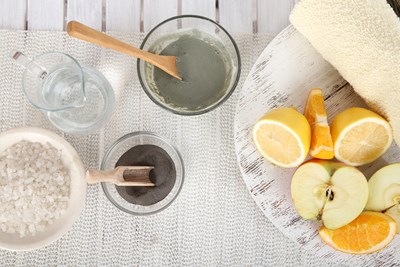There are many different types of skin—normal, oily, dry, and sensitive. However, some people have a combination of skin types that occur in different areas. A combination of dry and oily skin is typically dry and flaky in some places and oily in others, such as your nose, forehead, and chin (also referred to as the T-zone). If you struggle with combination skin, there are some steps you can take to make caring for your skin just a little bit easier.
Use gentle cleansers.
The first step towards managing combination skin is finding a good facial cleanser that works to prevent dryness and irritation. Gentle, water-soluble cleansers that are gel- or foam-based are generally a good place to start. You never want to use any facial cleansers that contain fragrances or irritants.
Don’t wash your face too much.
Even if your face appears greasy in the middle of your day, don’t wash your face at the first sign of shine, as this will only cause your pores to start to overproduce oil. Instead, try carrying blotting sheets that will help reduce oil during the day and save the scrubbing for morning and night.
Use toner to help repair your skin.
Toners can be really good products for repairing your skin—but only if they contain the right ingredients, such as anti-oxidants, cell-communicating ingredients, and skin-identical ingredients. Although these are fairly common ingredients in most toners, try your best to avoid toners that contain any kind of irritants, including alcohol, citrus oils, fragrances, menthol, and witch hazel.
Target different skin types on your face with different products.
Since different areas of your face will have different types of skin, you will need to use different products to address each area. Use lotion or cream-based moisturizers only in the dry areas of your skin. Be sure to avoid getting lotions or creams on any of the oily areas of your face, as this will only make them look and feel greasier. If you have a certain area, such as your eyes, that is the driest part of your face, use a heavier serum moisturizer only in that area. The oily areas of your face will not need a moisturizer at all. Matte finish foundation can be good for covering up the oily areas of your face as well.
Use sunscreen.
Protecting your skin against the sun’s damaging rays is important, no matter what time of year it is. This will help prevent wrinkles and other signs of aging skin. For the oily parts of your skin, look into foundations and powders that contain SPF to protect your skin without adding to the greasiness. For the more sensitive and dry areas of your skin, choose sunscreens that contain titanium dioxide or zinc oxide as the active ingredients to prevent irritation.
Exfoliate to help remove dead skin cells.
Exfoliating products that contain beta hydroxy acid or alpha hydroxy acid can help to uncover the normal, healthy skin that is underneath the buildup of dead skin cells. These products also help to exfoliate inside your pores, which can help oily skin because it reduces pore size, unclogs pores, and kills acne-causing bacteria.




